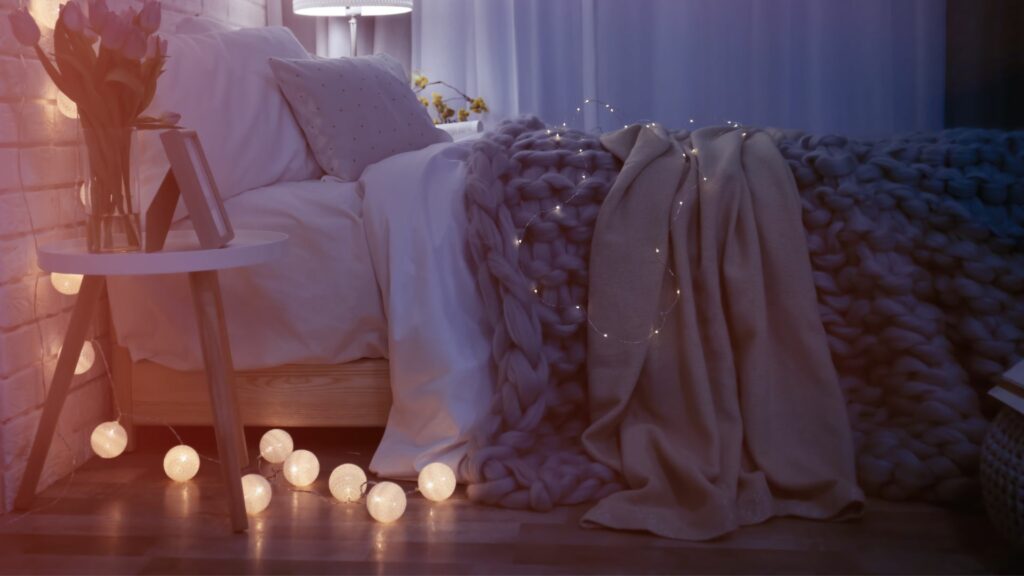Building a safe space for autistic people
Space: the final frontier and, for people with autism, the thing we need most when the weight of the world feels like a million-billion galaxies (or, you know, a pandemic causes a global lockdown and takes away the certainty we thrive on).
In the past, an autism sensory room has always been the go-to recommendation to provide this. However, crafting the perfect safe space can prove problematic, when all the autism sensory room ideas you have, are grounded by the resources you don’t.
Nevertheless, your voyage into autism sensory rooms doesn’t have to end here as, within this post, you will learn how to bring your sensory room ideas to life, regardless of space in your home or budget available.
What is a sensory room?
We’ve all had those moments when we put our heads down to concentrate, try to gauge our thoughts and then suddenly CRUNCH! you realize you’re sitting next to the world’s noisiest eater. In any other circumstance, you turn the other cheek, but something about that exact sound makes it impossible to ignore, as you grind your teeth, clench your fists and wish you could be anywhere else.
For autistic people, this feeling of being attacked by our senses is more common than you might think, as difficulties in sensory processing and interoception make regulating stimuli much more overwhelming (and in some cases harmful for long-term sufferers).
Subsequently, this can make experiences which impact on our senses i.e. bright lights or loud music feel incredibly distressing and, like spending a moment with the previously mentioned chew-nado, we need a break.
A location specifically designed to either distract the senses with stronger stimuli or downright block it out (aka a sensory room) have long been the doctor’s orders here – a prescription first provided in the mid 70s, when the rooms were known as ‘Snoezelens’ (a title comprised of the Danish words ‘snuffelen’ which means to sniff and ‘doezelen’ which means to doze – no these won’t be on a quiz, I just thought it was cute to mention).
How to bring your autism sensory room ideas to life
With so many clear benefits to building a sensory room, you might have convinced yourself that building a base is going to be a tricky task – after all, nothing worth having comes easy. However while, yes, creating the ultimate sensory room isn’t the simplest job, this doesn’t mean it has to be complicated either – so long as you keep these things in mind for the construction.
Fit for purpose
Sensory rooms come in all shapes and sizes to match the need of the varying spectrum-dweller they will be assigned to. So, before you begin laying down the foundations for your sensory fort, first consider why you’re setting it up.
In addition to those which were previously mentioned, some purposes of a sensory room that you might want to consider include making it a place for fun, relaxation, privacy, socialising, and developing abilities such as motor skills (through the use of tangle toys and such).
Sensory basic room design
Does the sensory room need a door for privacy? Will it be strong enough to survive a meltdown? Is electricity needed and how can you make sure that you won’t walk in and see our skeleton flashing like a looney tune who’s just been hit by thunder? Once you have decided on what the purpose of the sensory room is, there are still lots of things left to consider. However, regardless of which direction you set your sails, make sure that every journey starts with a plan.
As any autistic person will tell you, plans are the best and, when it comes to something where every detail counts (right down to which non-obtrusive colour you use), everything should, and needs, to be considered.
What’s more, a sensory room plan can be an ideal way to introduce an autistic person to their second home as, despite good intentions, springing the finished product on any autist will most likely result in anxiety and the harbouring of bad feelings towards the final build.
Location, location, location
They say that location is the most important thing to consider when setting up camp but, when it comes to creating a sensory room, this isn’t quite the case. Sure, you want to pick a position which won’t be disturbed (as it can be hugely detrimental to tamper with a sensory room once it has been set up) but, other than that a sensory room can be anywhere, including:
• a disused wardrobe
• a blanket over a table
• a pillow fort
• an indoor tent
• a bedroom
• an attic
• a purpose-built extension
Nevertheless, this doesn’t mean you should just go plopping your foundations anywhere, as there is still the small matter of what senses will be impacted on in the sensory room. As such, consider how the time of day/year will impact the volume of smells, sights and sounds in the area and also take a moment to ponder whether these will impact the overall safety of the room for the person it is built for.
Appearances aren’t everything
When I was younger I had a sensory den in a garden shed (which was covered in spiders) one in the boot of my dad’s beat-up Nissan Primera (which was covered in spiders) and finally the entire front room of the house – which although inconvenienced the rest of my family, you really can’t hold it against me when the alternative included making many 8-legged friends.
Over time this taught me that a sensory room really can take on any aesthetic, so long as it gets the job done. So, when looking for autism sensory room ideas, don’t get bogged down by the many glamorous Hugh Hefner-esque designs you will find on sites like Pinterest.
Of course, looking around for inspiration is never a bad thing, but remember not to get lost in trying to duplicate what you see online. Instead, focus on elements you can adapt from others, into your own project – all the while remembering that what might work well for one autist might not work quite as well for others.
Never stop looking to improve
If you find that, after you have completed the sensory room, your loved one has become a bit of a Goldilocks (finding too much or too little of some aspect of a setting), then don’t immediately consider knocking down the whole project and starting again. Instead, try to understand what the exact problem might be and from there see how it can be improved.
Sight: If the room is too bright, consider installing a light dimmer or a sunblind to block out windows when necessary or, if the autistic person is unhappy in the construct, maybe consider if there is something outside which could be causing the discomfort.
Sound: If things are too loud consider setting up some background music to play over the top, like the Spotify piano rain mixes (which I personally love) or, why not purchase more cushions to pad walls and create makeshift soundproofing?
Smells: If a strong smell is causing disruption, candles are often the first choice for resolving this. However, open flames near a lot of makeshift D.I.Y. has a habit of ending in disaster. So, try introducing strong-smelling oils to run on the autists arm’s or under their nose as this can promote positive tactile feelings and is less likely to end in a 999 call.
Furthermore, most autistic people take a long time to adjust to a new thing and, seeing a new structure appear before our eyes, can be quite alarming at first. Therefore, if an autistic person is ignoring a sensory processing room in the initial stages of introduction, don’t be disheartened and instead potentially create a social story to warm us up to the idea or give the autistic person time to adjust.
Bonus: additional items
Don’t get me wrong, I love it when businesses make items specifically for autistic people but, in recent years, certain product peddlers have found that by whacking a ‘for autism’ label at the end of their gizmos, they can hike up the prices and take advantage of our wanting community.
For many, this not only leaves a sour taste, but it can also make the prospect of a perfect sensory room seems like a luxury for the rich. Yet, if you search for similar items without any mention of autism or sensory in their titles, you will quickly find that many of these trinkets are quite affordable for example:
• disco balls
• lava lamps
• tangle toys
• beanbag chair
• fidget spinners
• ball pits
• bubble machines
• weighted blankets
• pin art needle toy
• chewable jewellery
Further reading:
Find out more about sensory rooms and how to create a sensory garden on James’ website Autistic & Unapologetic





